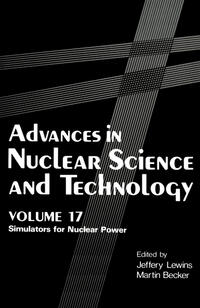
This volume represents the second of our occasional departures from the format of an annual review series, being devoted to one coherent topic. We have the pleasure therefore in presenting a concerted sequence of articles on the use of Simulators for Nuclear Power. An essential attribute of a quantified engineer in any discipline is to be able to model and predict, i.e. to analyze, the behaviour of the subject under scrutiny. Simulation goes, one would argue, a step further. The engineer providing a simulator takes a broader view of the system studied and makes the analysis available to a wider audience. Hence simulation may have a part to play in design but also in operation, in accident studies and also in training. It leads to synthesis as well as analysis. There is no doubt that the massive scale and the economic investment implied in nuclear power programmes demands an increased infra-structure in licensing and training as well as in design and operation. The simulator is a cheap alter native - admittedly cheap only in relative terms - but also perhaps an essential method of providing realistic experience with negligible or at least small risk. Nuclear power therefore has led to a wide range of simulators. At the same time we would not overlook the sub stantial role played by simulators in say the aero-industry; indeed the ergonomic and psychological studies associated with that industry hold many lessons.